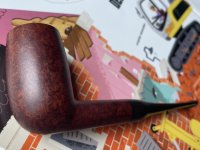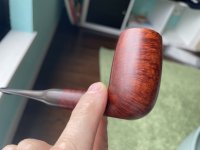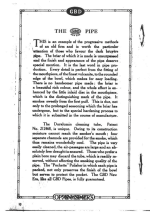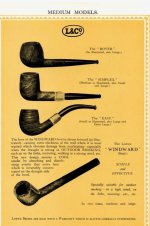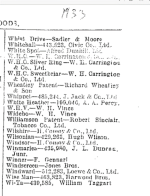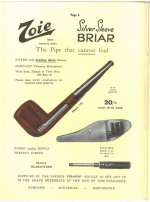Agreed, without actual data it's just guessing.
Actually I've found that a decent percentage of catalogs either list explicitly or make reference to patents, trademarks, and/or design registrations. And it only takes one to have a terminus a quo for the document. Of course you have to match the reference with the thing it is referring to (i.e. the patent filing, trademark grant, or design registration) to figure out the date.
Here are a few quick examples:
A page from a Oppenheimer/GBD catalog mentioning a patent which proved to have been granted in 1924:
View attachment 245049
A page from a Loewe catalog referring to a trademark for its Windward model:
View attachment 245051
Since the actual registration number (512283) isn't shown here it had to be found elsewhere, in this instance in the 1933 edition of the annual Fancy Goods Brand Directory. Although the trademark papers either have not survived or are not digitized, interpolation reveals the number assigned to the Windward must date from April of 1930:
View attachment 245052
As a final example (I have more from other manufacturers too) here is a page from a circa 1935 Duncan's catalog citing the 1925 patent received by John Louis Duncan:
View attachment 245068
So while not every catalog mentions patents/trademarks/design registrations the fact is that many do. IP was a point of distinction that manufacturers used to tout their wares, and reference appeared not only on the pipes themselves (a legal necessity) but not infrequently in other marketing collateral.
